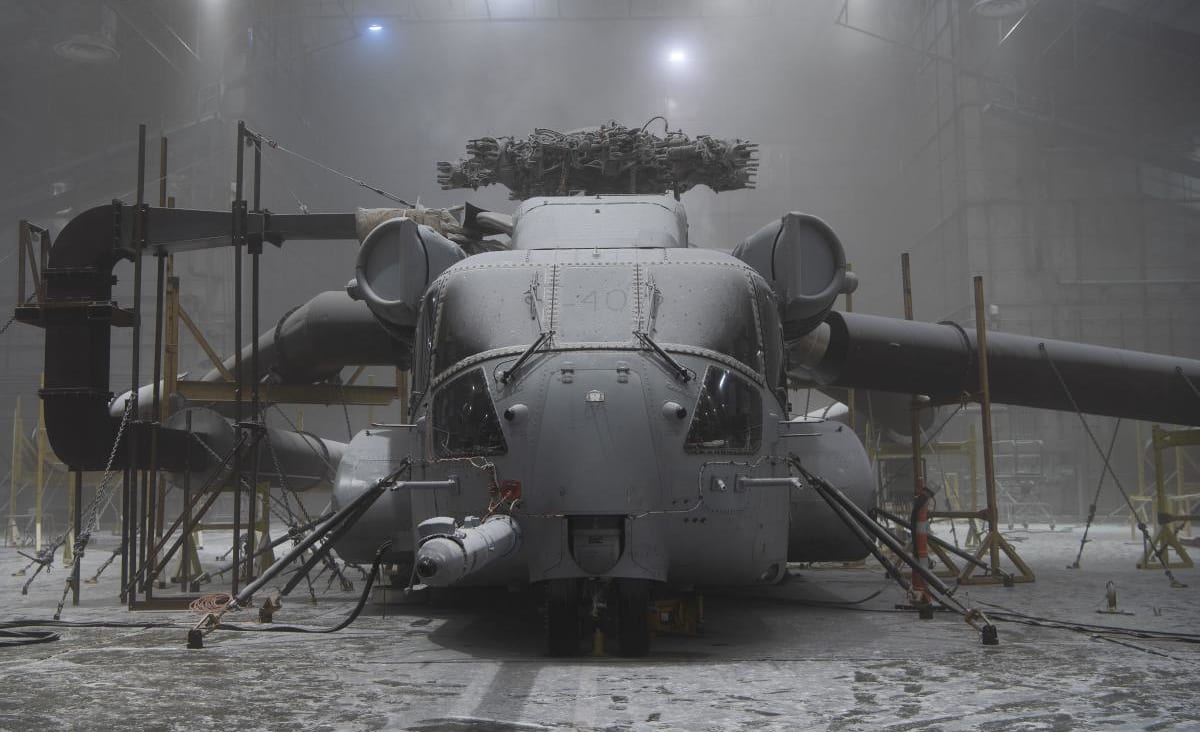
www.yahoo.com
Marine Corps declares its heavy lift helicopter operational
The Marines this month declared initial operational capability for its CH-53K King Stallion, after the heavy lift helo demonstrated not only its operational performance but the maturity of its training and logistics programs as well.
Science & Tech
WASHINGTON — The U.S. Marine Corps this month declared its new heavy lift helicopter operational, following the completion of test, training and sustainment requirements.
Deputy Commandant for Aviation Lt. Gen. Mark Wise on April 22 determined the Sikorsky-made CH-53K King Stallion had achieved initial operational capability. The service announced the milestone April 25.
The CH-53K provides a significantly improved capability over the CH-53E Super Stallion. The 53K’s requirement includes flying 110 nautical miles while carrying 27,000 pounds of cargo internally or externally — essentially carrying three times more weight than the 53E can under comparable conditions.
Operationally, this means the 53K can transport a Joint Light Tactical Vehicle from an amphibious ship at sea to a position well inland, something the legacy helicopter cannot do.
The King Stallion proved through testing it can also carry greater weight, travel longer distances or fly in more strenuous environmental conditions, allowing operators to trade off the variables to meet mission needs.
“My full confidence in the CH-53K’s ability to execute the heavy lift mission is the result of successful developmental and operational testing conducted by Air Test and Evaluation Squadron (HX) 21 and Marine Operational Test and Evaluation Squadron (VMX) 1″ Wise said in a Marine Corps statement.
The CK-53K was previously expected to reach IOC in late 2019 or early 2020, but the program ran into significant technical challenges in early 2019. The highest profile challenge was an exhaust gas re-ingestion problem, where the hot and dirty exhaust from the three engines was being sucked back up, rather than the engines taking in clean air. The Navy, Marines and Sikorsky had to turn their attention to addressing this technical issue because the exhaust re-ingestion was causing problems ranging from increased maintenance needs and higher life-cycle costs to maintain the helicopter to the engines overheating and even stalling during flight tests.
The Navy and Marine Corps announced in December 2019 they had resolved that problem and could continue on with the test plan.
During the subsequent initial operational test and evaluation period, the 53K flew more than 3,000 mishap-free hours in various temperatures, altitudes and terrains.
It even rescued a Navy MH-60S helicopter that was disabled on a mountainside in California after a hard landing. The Navy thought the only way to recover the helo would be to cut it into pieces, since no other aircraft in the military could reach it on a rugged mountainside at a high altitude — but on Sept. 5, Marine Operational Test and Evaluation Squadron One (VMX-1) used one of its CH-53Ks to retrieve the MH-60.
According to the Marine Corps statement, the 53K can produce 57% more horsepower and has 63% fewer parts, contributing to a lower maintenance requirement and more operational time for the helicopters.
Earlier this month, heavy lift helicopter program manager Col. Jack Perrin told reporters Marine Heavy Helicopter Squadron (HMH) 461 had its first two helos and would have four by the end of April. At the time, he said the Marines just had to verify training and logistics requirements before declaring IOC, after the test program had already proven out almost all the IOC requirements.
Perrin said the helicopter should enter full-rate production by fiscal 2023 and will go on its first operational deployment with a Marine expeditionary unit in FY24.
























































